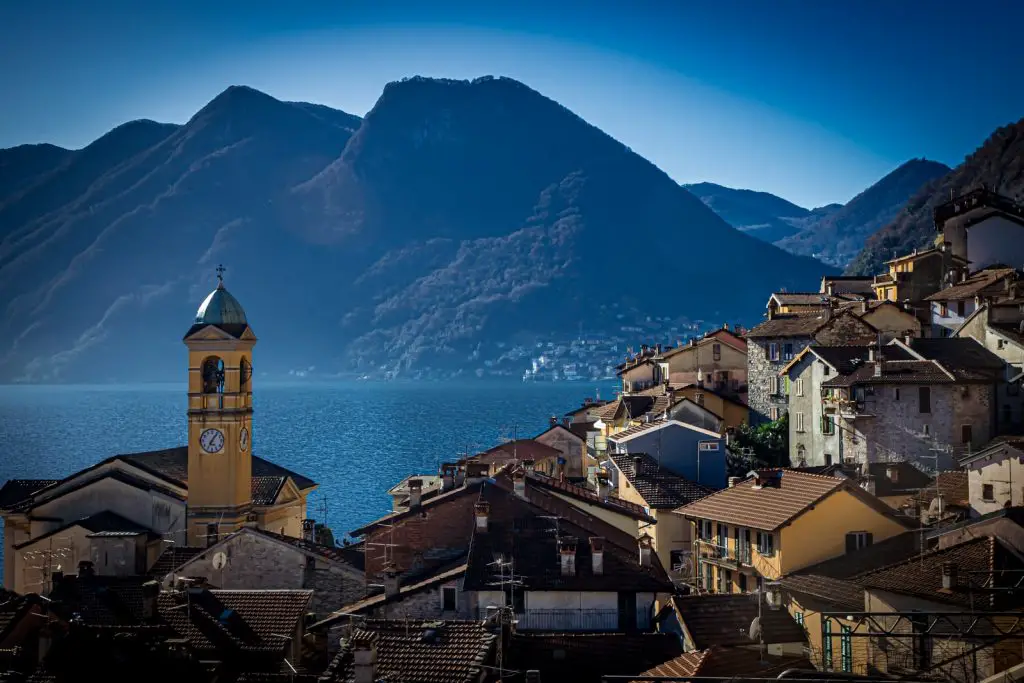Lombardy Travel Guide
The richest and most populous of Italy’s regions, Lombardy is home to Milan. Milan is not only the capital of Lombardy, but also Italy’s capital of fashion, finance, and media.
Known as Lombardia in Italian, Lombardy derives its name from the Longobards, a Germanic kingdom that ruled large stretches of the Italian peninsula beginning in the 5th century. Longobard sites, located in Lombardy and as far south as Puglia and Campania, were inscribed as a group UNESCO Heritage site in 2011.
Lombardy has a total of 10 UNESCO sites, one of which is the church and convent in Milan that houses The Last Supper by Leonardo da Vinci.
Lombardy Map
Lombardy is bordered by the Italian regions of Piemonte, Emilia-Romagna, Veneto, and Trentino-Alto Adige. To Lombardy’s north is Switzerland. The wealthy Swiss cities of Lugano and St. Moritz are just over the border from Como and Sondrio.
Traveling to and Around Lombardy
Lombardy is well connected with public transportation and its highway network is very well maintained.
Milano Centrale is the largest train station in Lombardy and is a hub for high-speed trains and regional train travel in Italy. Milan is usually the first stop for rail travel from Europe to Italy.
Milan is the starting point for three main highways in Italy. The A1, which connects Milan with Bologna, Florence, Rome, and Naples, is the oldest highway in Europe. The A7 connects Milan to Venice. And the A8, the world’s first dual highway (opened in 1924), connect Milan with the Lombard town of Varese. Another important highway to pass through Milan is the A4, which originates in Turin and travels the width of northern Italy all the way to Trieste.
Milan has two international airports. Malpensa Airport is the largest and oldest airport in Milan and serves international travelers from all over the world. Linate Airport is Milan’s second airport and gets most of its traffic from smaller airlines within Europe.
Where to Go in Lombardy
Milan is the beacon of Italy. It attracts many bright, young Italians at Bocconi University as well as many others aspiring for careers in finance, fashion, and media. Milan is a youthful city, a fact that is evident in the Navigli canal district where lively bars and restaurants spill out onto the sidewalks.
Although Milan is shorthand for modern Italy, it is also an ancient city. It rests on the ruins of Mediolanum, which briefly served as the capital of the Western Roman Empire. One of the most important remnants from this time period is the Basilica of Saint Ambrose. Sant’Ambrogio is Milan’s patron saint and his remains lie in the crypt below the church.
Of course, Milan is most recognized for its other church. The Duomo of Milan is the largest church in Italy and the second largest church on the Italian peninsula after Saint Peter’s Basilica in Vatican City.
Besides Milan, Lombardy has many notable cities and towns:
- Mantua and Sabbioneta are two towns recognized by UNESCO as heritage sites because of their Renaissance-era centers.
- Monza and Brescia are famous for car racing — Monza hosts the Formula One Italian Grand Prix, while Brescia hosts the Mille Miglia classic car race.
- Bergamo is known as the Città Alta (high city) and is rich with art and views of the Alpi Bergamasche.
- Cremona is famous for violins and violin making; Antonio Stradivari is a native son.
Lombardy’s Lakes

Many visitors to Lombardy come here for its refined lakeside towns. Beloved for ages, but especially during the Grand Tour of the 18th and 19th centuries, the Italian Lakes are where the wealthy come to relax and enjoy the mountain lake air and scenery.
Of Lake Como, Mark Twain said, “No other place than Lake Como can such a paradise of quiet rest be found.”
Lake Garda and Lake Maggiore are Lombardy’s largest lakes. Lake Como, where you will find the cities of Como and Bellaggio, is the region’s most famous. Smaller Lake Iseo is where artists Christo and Jeanne Claude amazed art lovers with their temporary installation Floating Piers in 2016.
UNESCO Heritage Sites in Lombardy
Lombardy boasts 10 UNESCO sites:
- Church and Dominican Convent of Santa Maria delle Grazie with “The Last Supper” by Leonardo da Vinci, Milan
- Crespi d’Adda
- Mantua (Mantova) and Sabbioneta
- Monte San Giorgio
- Prehistoric Pile Dwellings around the Alps (Shared with Piemonte, Trentino-Alto Adige)
- Rhaetian Railway in the Albula / Bernina Landscapes
- Rock Drawings in Valcamonica
- Sacri Monti of Piedmont and Lombardy
- San Salvatore-Santa Giulia in Brescia (Longobard Site)
- Santa Maria Foris Portas, which includes the castrum with the Torba Tower and the church outside the walls, Castelseprio (Longobard Site)
Best Tours in Lombardy: Day Trips and Package Tours
Consider one of these tours or package deals to get the most out of your visit to Lombardy:
- The Best Of Milan Tour With Last Supper Tickets & Milan Duomo Rooftop
- Tour to Bernina Express and Swiss Alps with Hotel Pick Up. Escape to the Alps for the day to enjoy the UNESCO-recognized Bernina landscapes.
- Bergamo Half-Day Tour from Milan.
- Full-Day Lake Como Excursion. Context Travel’s luxurious tour of Lake Como takes you to Bellagio, Varenna, and the historic district of Como.
- Milan Franciacorta Wine Tasting and Shopping Tour
Recent Posts About Lombardy
